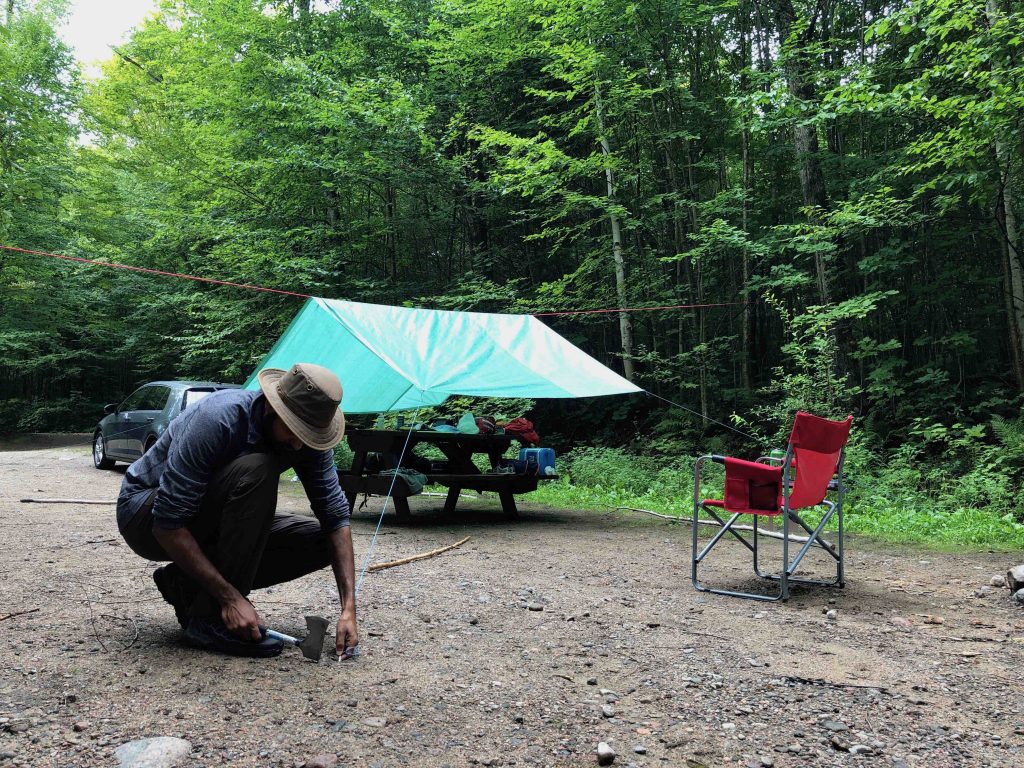If you’re new to camping, you might be wondering why so many other campers hang a tarp over a perfectly good looking tent.
Well, there are 4 essential reasons why hanging a tarp over a tent is beneficial. A tarp over a tent is added protection from rain, sun, and wind, and can provide extra covered floor space.
So, let’s explore all the reasons why a tarp over a tent is a good idea, and why you should consider doing it the next time you’re camping.
Article Contents:
1. Enhanced Protection from Heavy Rain
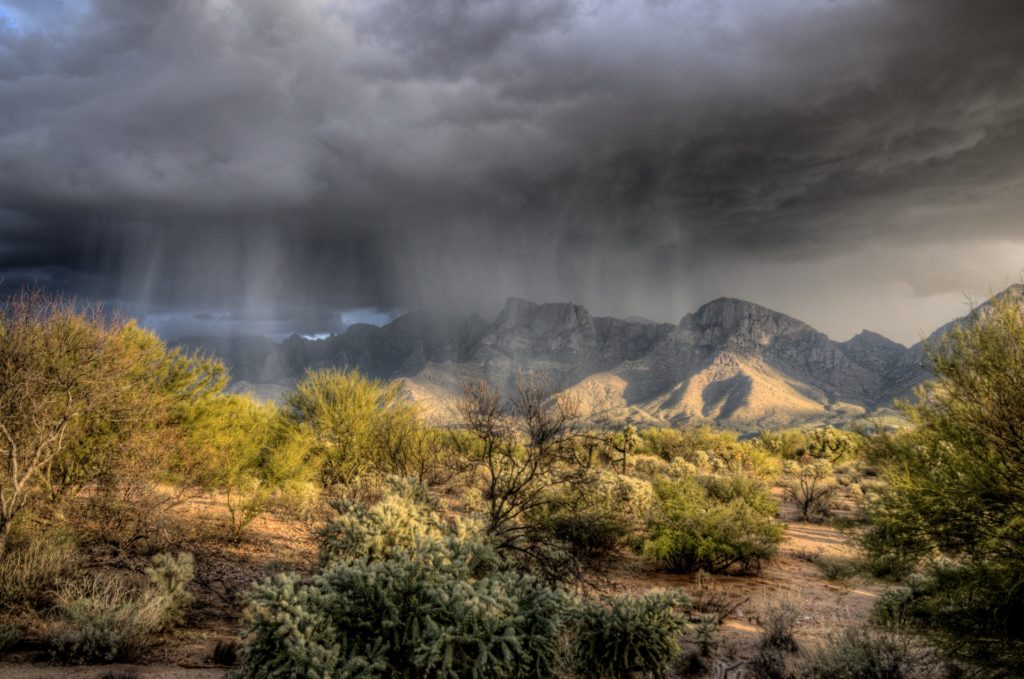
The first and primary reason many campers hang a tarp over their tent is to provide added protection from rain.
Speaking from experience, it’s not fun been trapped in a tent during a long rainstorm overnight, only to wake up with a pool of water next to you.
That’s why, if there’s a slight chance of rain, we always hang a tarp over our tent.
- A tarp can act as an initial water barrier, and protect your tent and all the dry belongings inside from heavy rains.
A good camping tarp is usually constructed from materials and coatings that repel water. Sometimes, the waterproof rating of a tarp is higher than the tent it’s protecting.
For example, our Kaiju 4-person tent has a polyurethane coated rainfly, which has a waterproofness rating of 1200 mm. But, our MEC silicone coated nylon tarp is rated for 2000 mm. Our tarp has a waterproofness rating 30% higher than our tent!
So, although our tent has a high waterproof rating by itself, and is generally considered a great tent for torrential downpours, having a tarp is added peace of mind and security for water protection.
Pro-tip: For water protection, make sure you use either a polyurethane coated tarp or a silicone coated tarp with a waterproofness rating for at least 1500 mm. The coating makes the biggest difference when it comes to waterproofness!
Best Ways to Setup a Tarp for Rain Protection
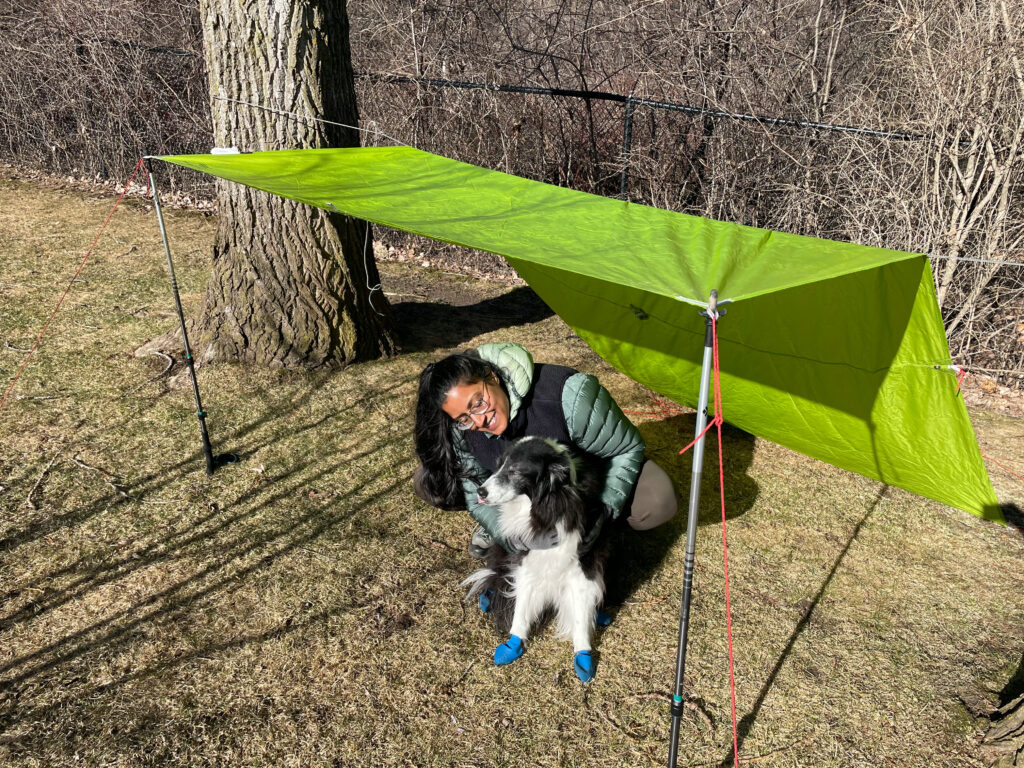
So, what’s the best way to setup a tarp over a tent when torrential rain is in the forecast? Well, there are two standard tarp setup methods that will work: A-frame and lean-to.
Not sure how to setup an A-frame or lean-to style tarp? No problem!
Check out my Tarp Setup Tutorial for step-by-step instructions with pictures that you can follow!
- An A-frame or lean-to style tarp setup above your tent will help block rain and deflect it away from your tent roof and walls.
- Both tarp setups are simple, sturdy, and work to keep water away from vital camping equipment that needs to stay dry.
For both techniques, if you expect rain and high winds, ensure the tarp ends are draped low enough to the ground to shield the sides of your tent.
This ensures water droplets carried horizontally by high winds don’t make their way through exposed mesh windows or zippers which aren’t entirely waterproof.
2. Added Shade from the Sun

Summer camping temperatures can quickly start to rise shortly after the sun peaks over the horizon. The result, tents start to warm up quick.
- Tents act as mini greenhouses, trapping and warming the air inside.
- The internal temperature can quickly surpass the outside temperature.
For campers who are late risers, or anyone looking to take a nap during the day, attempting to sleep inside a hot tent is brutal.
Sure, if there are no bugs you can open all the doors and windows, but if there’s no breeze it’ll get far too hot to stay inside.
So, one solution to reduce the sun’s influence is to setup a tarp above your tent to provide shade.
- A tarp set up above your tent can block the majority of light energy from the sun.
- A tarp can drastically reduce the heat exposure of your tent, reducing the overall temperature inside your tent.
For example, I measured the temperature inside of my tent on a relatively hot summer day, both with and without a tarp overhead. The temperature difference was substantial.
- Having a tarp hanging above reduced the overall temperature inside of the tent by a whopping 8 degrees Celsius!
Personally, I like to take daytime naps while camping and I’d much rather do it inside of a tent that’s cool than one that feels like the inside of a toaster oven at times.
3. Wind Block
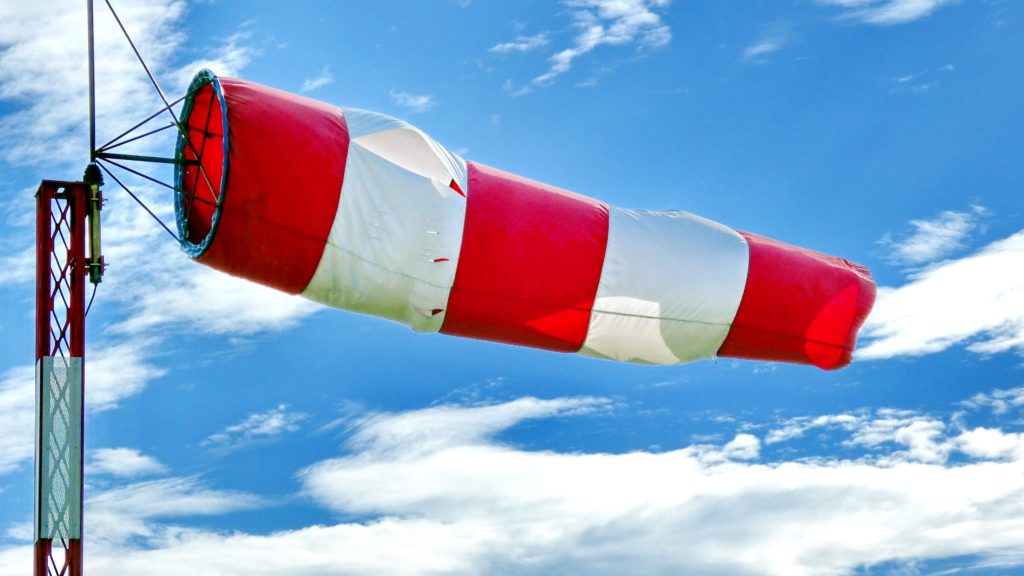
Most high-quality tents are designed to withstand a certain amount of wind load. Even entry-level tents, such as Coleman, are WeatherTec™ rated to withstand winds up to 35 m/h (56 km/h).
- Extended exposure to high winds or significant wind gusts can over-stress and damage your tent.
- Poles may bend or snap, the fabric may stretch to the point of tearing, or the whole structure can simply get lifted and blow away.
This is because the amount of force on a tent is proportional to the perpendicular surface area exposed to wind. For example, a cube-shaped tent with vertical walls experiences more wind force than a dome shaped tent.
So, not only should you improve the stability of your tent by using the built-in guy-lines to anchor the tent to the ground, but you should also consider setting up a tarp to block some of the wind.
- An angled tarp set up above and around a tent can deflect high winds away from the tent body.
- The best tarp setup shape to deflect wind away from a tent is a lean-to design.
Essentially, a lean-to is a highly sloped tarp that starts near ground level and ends slightly above the tent roof. The angle of the tarp can be better suited to deflect wind and gusts away from your tent body, or at least significantly reduce it.
Pro-tip: For more information on setting up tents for high winds, check out my in-depth article Camping in High Winds – How to Stop Your Tent Blowing Away.
4. Extended Covered Area

Another great set of features that a tarp hung over a tent can unlock is creating an extended covered area.
Specifically, the three extra features include:
- Creating extra protection when entering and exiting the tent
- An enclave area for seating
- A dry storage area for equipment
So, let’s explore these tent enhancement features individually below.
Extra Protection When Getting In and Out of the Tent
If it’s raining or snowing, getting in and out of a tent can be a bit tricky. You’ll need to quickly unzip the door, open it, step out, put on shoes, and zip the door closed.
Most compact and light-weight tent designs have minimal overhead coverage when it comes to entering and exiting a tent.
So, after having camped in torrential storms for several years, I’ve found the best way to get in and out of a tent without having water pour inside is by hanging a tarp over the tent.
- I would recommend having at least 3 to 4 feet of overhead coverage from a tarp.
- If possible, slope the tarp downward away from the tent entrance.
Doing this ensures any precipitation even during windy conditions can be blocked and directed away from you and the tent door.
Added Area for Seating
Some bigger, family-sized tents include a large entrance vestibule for seating and gear storage. However, you can create a very similar space in front of your tent using a tarp!
- Suspending a tarp that extends 6 to 8 feet away from the tent entrance is more than enough space for a few chairs.
The tarp can provide shade and protection from rain, so you can comfortably sit outside instead of being stuck inside of your tent.
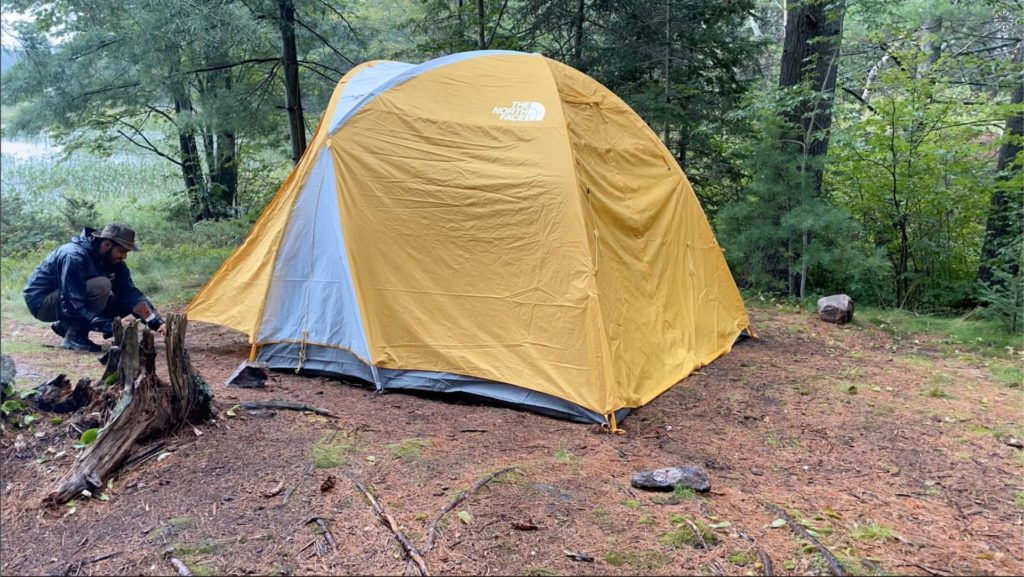
Dry Storage Area for Equipment
If you’ve reached the maximum capacity of sleepers inside of a tent, you might need to look for alternative areas to store camping equipment.
Sure, you can just leave your stuff outside, but if rain is forecasted, you’ll want to find a sheltered and dry area for storage.
- A tarp draped over the side of a tent can add precious dry space for your gear.
- Ensure that the storage area isn’t located somewhere around your tent where water would naturally pool during a rain storm.
It’s a good idea to keep essential gear close-by, so this method ensures you’re covered just in-case anything comes up.
Pro-tip: I recommend staking down and tying off the corners of the tarp to ensure it doesn’t blow away from a strong gust of wind.
This article contains affiliate links, which help support this blog at no cost to you!

